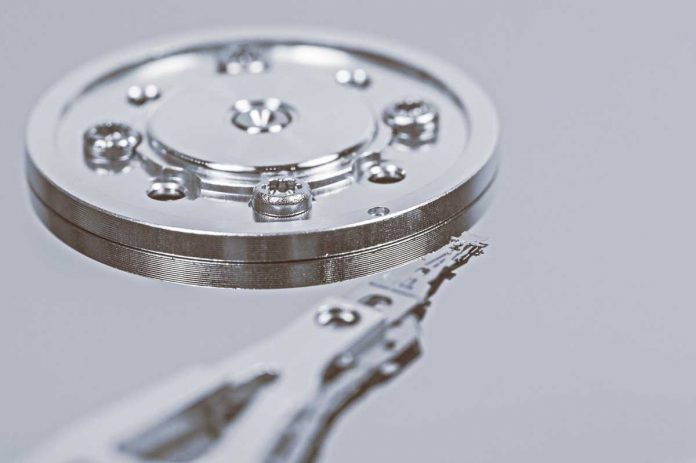Researchers found out an atomic-scale magnetic pattern that looks like hedgehog spikes can provide hard disks with much larger capabilities than it has today. This finding is going to help data centres hugely as these centres will be able to keep up with the rapidly increasing demand for video and cloud data storage.
This research paper has been published in the journal Science. Ohio State University researchers have used a magnetic force microscope to view the patterns that has formed on the thin film of germanid manganese which is an anomalous magnetic material. The magnet is not like any normal magnet such as iron. The magnetism of this material has a spiral like DNA. A new zoo of magnetic patterns will be created with the names such as hedgehogs, anti-hedgehogs, skyrmions and merons. These magnetic bits will be much smaller in size than it is today.
The professor of physics at Ohio State University and a senior author of the study, Jay Gupta said “These new magnetic patterns could be used for next-generation data storage”.
Hard disk density is approaching its limits. Small magnetic bits are also allowing the storage. This has motivated the researchers to look for new materials. Researchers are making magnetic bits smaller.
Scientists have used Scanning tunnelling microscope to visualize the magnetic pattern. The microscope has been modified with special tips. This microscope uses atomic resolution to provide pictures of the magnetic patterns. The pictures suggested in some portions of the sample, the surface of the magnetism is twisted into a pattern that resembles a hedgehog’s spikes. But, the “body” of the hedgehog is 10 nanometres wide whereas the “body” of the magnetic bits is 50 nanometres wide. It is almost impossible to visualize. A single human hair is 80,000 nanometers thick.
The researchers found that the hedgehog pattern can shift on the surface with an electric current or invert with a magnetic field. This foreshadows the reading and writing of magnetic data and may use much less energy than is currently available.
Scientists said there is huge potential for these magnetic patterns to allow data storage and to become more energy efficient. They also think more research to be done before the material is used in any data storage site. Gupta said “We have a huge amount of fundamental science still to do about understanding these magnetic patterns and improving how we control them. But this is a very exciting step.”

